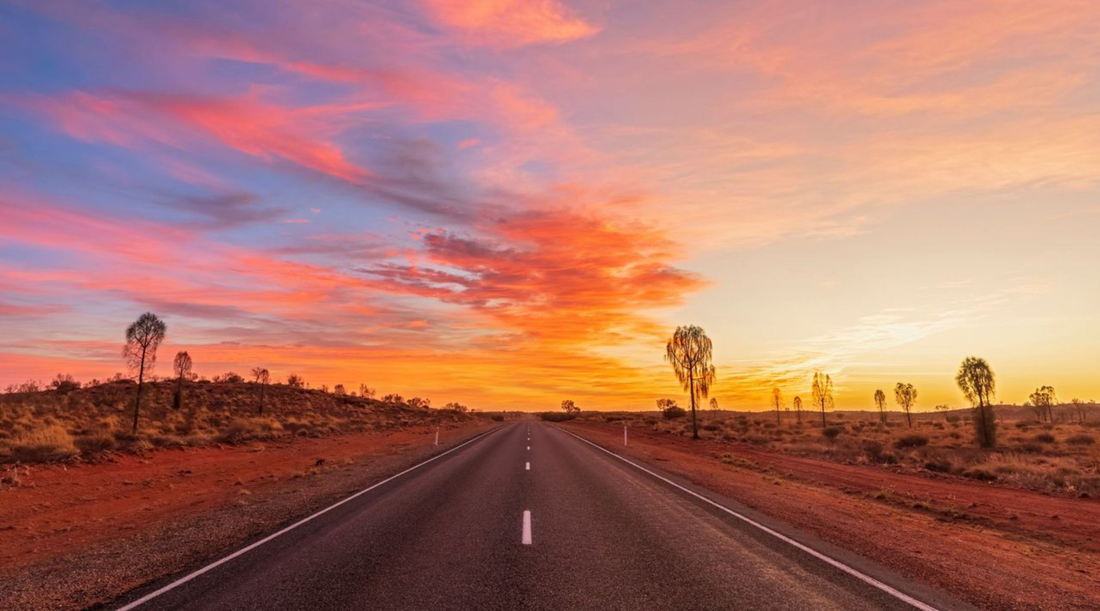
Driving in Australia: Unique Challenges and How to Handle Them
Driving in Australia is an experience like no other. From vibrant cities to endless countryside, the country offers diverse and breathtaking scenery. However, these unique conditions also present challenges that drivers must be prepared to handle. From ultra long distances between stops to harsh weather conditions, understanding these risks is key to staying safe.
In this guide, we’ll explore the most common challenges you’ll face on Australian roads and share practical tips to help you navigate them with confidence.
Long Distances & Remote Driving
Australia is renowned for its wide-open spaces. These long stretches of open road might be majestic but also present challenges. Distances between major cities are often huge. Even local towns may be hundreds of kilometers apart. Mobile reception can be patchy or non-existent in remote areas - making it difficult to call for help if something goes wrong.
How to handle it:
- Plan your route carefully: Check distances between stops and identify fuel stations ahead of time.
- Refuel whenever you can: Don’t wait until the tank is nearly empty - top up at every available station.
- Pack emergency supplies: Carry extra water, food, a first aid kit and a spare fuel can in case of the unexpected.
- Prepare your vehicle: Ensure it’s serviced and roadworthy before heading out. Check your tyres, brakes and coolant levels.
- Monitor your tyres: tyre blowouts on remote highways can leave you stranded. Installing a Tyre Pressure Monitoring System (TPMS) can give you early warnings of leaks or under-inflation, helping you avoid dangerous situations.
By planning ahead and equipping your vehicle properly, you can enjoy the freedom of Australia’s open roads and mitigate any risks.

Wildlife on Roads
Kangaroos, wombats, emus and even camels frequently wander onto rural roads - particularly at dawn, dusk, and during the night. To avoid harming wildlife, the below tips should be followed:
- Avoid driving at high-risk times: If possible, plan your trips to avoid driving at dawn, dusk or at night in rural and bushland areas, when animals are most active.
- Slow down in wildlife zones: Pay attention to warning signs and reduce your speed in areas known for animal crossings.
- Use high beams wisely: On dark rural roads, high beams can help spot animals earlier, but remember to dip them for oncoming traffic.
- Stay alert: This might seem simple but constantly scanning the sides of the road, not just the lane ahead and help detect wildlife. Animals can move suddenly and unpredictably.
Harsh Weather Conditions
It wouldn’t be Australia if it didn’t have diverse landscapes, weather and environmental conditions. Although the mix can look majestic as scenery, sudden weather changes can quickly turn a routine drive into a risky situation. In the Outback, extreme heat can strain your vehicle and tyres, while in northern regions, tropical storms and heavy rainfall can create dangerous road conditions. To properly deal with this, do the following:
Check forecasts before travelling: Be aware of any extreme weather warnings, especially during bushfire or cyclone seasons.
- Prepare for heat: In hot regions like the outback, carry extra water for both occupants and the vehicle itself and ensure your air conditioning is functioning properly.
- Be careful of rain: Heavy downpours can reduce visibility and cause roads to flood. Slow down to avoid hydroplaning and keep a greater distance from vehicles ahead.
- Be ready for fog: Use low-beam headlights (not high beams), reduce speed and increase your following distance.
- Monitor your tyres: Temperature extremes can affect tyre pressure - too low or too high can lead to blowouts.
Unsealed Surfaces
Beyond the main highways, many of Australia’s rural and Outback roads are unsealed - typically consisting of gravel, dirt or corrugated surfaces. While these roads open up access to stunning remote areas, they also present unique driving challenges. Loose gravel reduces traction, increasing the risk of skidding, while stones can chip paint or crack windshields. To drive safely during these conditions, follow these tips:
- Reduce your speed: Driving slower gives you better control and reduces the chance of losing traction.
- Increase following distance: Gravel can be kicked up by vehicles ahead, so keep extra space to avoid stone chips and dust clouds.
- Avoid sudden movements: Hard braking or sharp steering on loose surfaces can lead to skids.
- Check your tyres: Use high-quality, well-maintained tyres suitable for mixed surfaces.
- Carry a spare: Always travel with at least one spare tyre and the tools to change it.

Left-Side Driving for Visitors
For many international visitors, one of the first challenges when driving in Australia is adjusting to driving on the left side of the road. This difference can feel disorienting, especially when navigating intersections, roundabouts, or multi-lane highways. Simple habits like looking the wrong way before turning can lead to dangerous situations if you’re not fully alert.
- How to handle it: Take time to adjust. If you’re new to left-side driving, start on quieter streets or in low-traffic areas to build confidence before tackling busy roads.
- Pay close attention at intersections: Always look both ways and remind yourself that traffic flows from the opposite direction compared to what you may be used to.
- Be cautious with car controls: Some vehicle controls may also be reversed; take time to familiarize yourself before setting off.
Conclusion
Australia’s roads can be as unpredictable as they are beautiful. By understanding potential hazards you can plan ahead and travel safely. This includes equipping your vehicle with the right gear, staying alert and adjusting your driving to suit the conditions. Doing so allows you to enjoy all Australian roads have to offer, from city drives to remote adventures, while staying safe every kilometre of the way.



